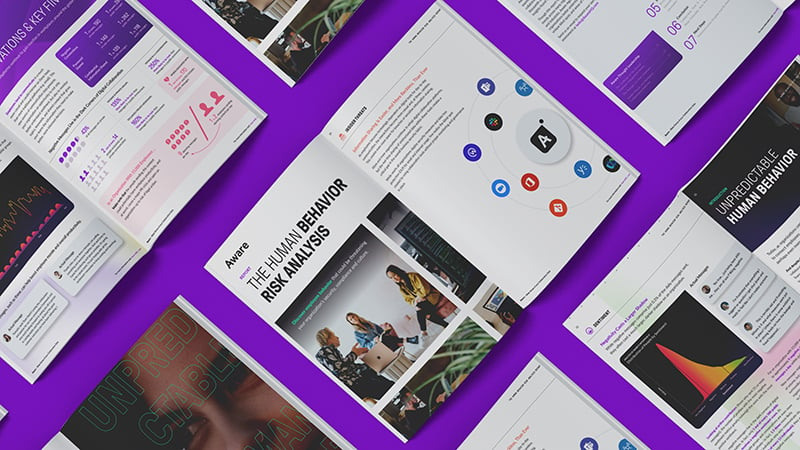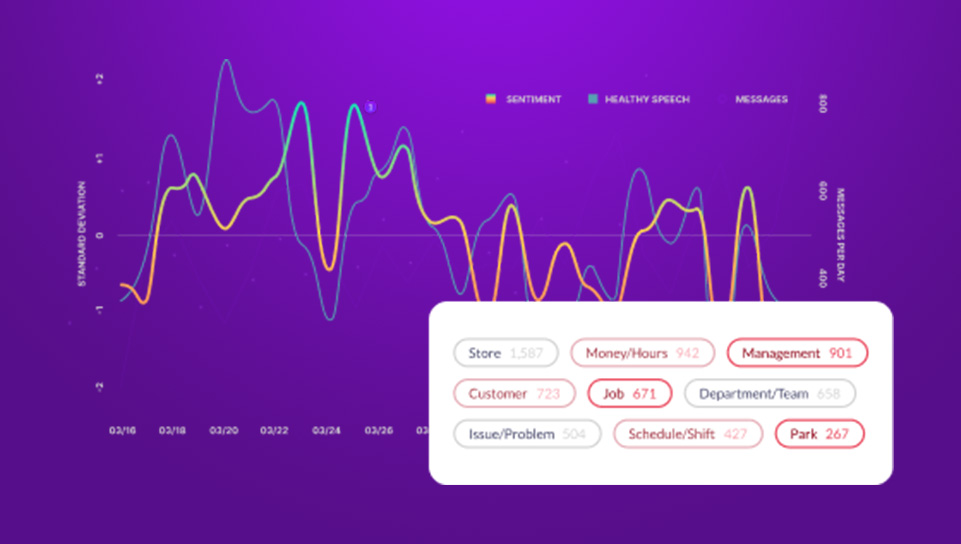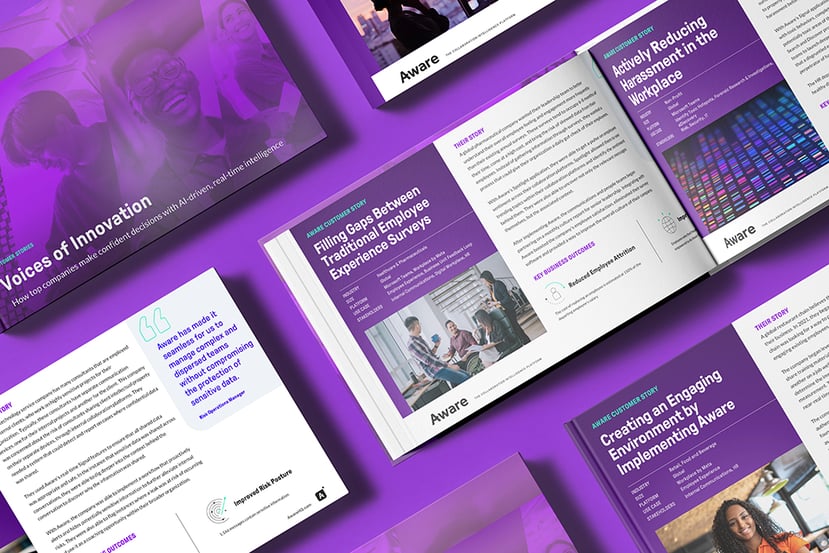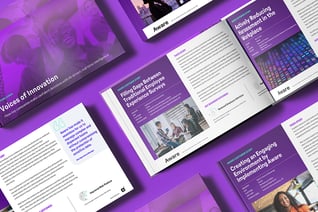Go Beyond Employee Pulse Survey Data with Qualitative Insights
by Aware
It’s no secret that engaged workforces foster motivated, invested and committed team members. They also experience 25-59% lower rates of employee turnover than those with low levels of employee engagement. Culture leaders around the globe rely on employee feedback to support their workforce during this time of widespread remote work. One of the most common tactics are employee pulse surveys.
What is a pulse survey?
A pulse survey is a short, frequent assessment used to measure employee attitudes, feelings and frustrations on a desired topic.
Pulse surveys allow leaders to capture the Voice of the Employee. While they are often paired with the traditional annual employee survey, Forbes reports that pulse surveys are a more accurate representation of employee sentiment and perception because once-a-year surveys lose relevancy as time goes on.
Now, pulse surveys are not perfect. In fact, we are here to tell you that there is an even more accurate, time-effective way to understand your people. Let’s first cover the shortcomings of the highly adopted pulse survey:
4 Inherent Flaws of Pulse Surveys
The biggest challenge with a survey—of any kind—is the potential for bias due to factors like a leading question, anonymity concerns, low response rates or even the mood of individual participants. As a result, 48% of employees agree that pulse engagement surveys portray an inaccurate representation of reality.
Poorly Architected Questions
Asking the wrong question can elicit an unhelpful answer from your team. For example, a pulse survey on employee health won’t expose your employee’s distrust in organizational leadership decisions.
Employee Anonymity Concerns
When employees think their identity accompanies their answers, open and honest feedback becomes less likely. They may feel embarrassed, uncomfortable or that it’s not their place to spread drama.
Required Employee Participation
Despite being short, pulse survey burnout is a real problem if you canvas employees too frequently. Likewise, if response rate is low, how can you be sure your results are truly accurate? 100% of your employee population must participate for authentic representation.
Biased Employee Responses
Employees are inherently biased. Physical needs (such as hunger or fatigue), satisfaction at work—or lack thereof—of a current project or momentary frustration with a leader can sway survey results.
Make Better, More Effective Decisions with Qualitative Insights
Address these inherent flaws in pulse surveys when you lay a qualitative insights solution on your enterprise collaboration tools. Using AI and ML technology, these tools interpret the content of employee communications on a macro scale to supply trends in sentiment, conversation health, trending topics and more.
Let’s say your organization rolls out an unlimited PTO policy. Your employees seem overjoyed and your collaboration platforms blow up with chatter of the news. A few months into this policy, you begin to wonder whether employees are taking advantage of their newfound flexibility. Are they taking off the time they need? Do they feel like they have permission to take off said time? Are these challenges company-wide or isolated to one group/department? You distribute a pulse survey and 40% of your employee population responds. While the results of the survey show that employees appreciate and understand the policy, there is actually more to the story.
Without full survey participation, you missed out on a lot of voices. If you had skipped the pulse survey and looked inside your collaboration platform for answers instead, you would have learned employees’ true feelings. For example, a topics analysis of employee conversations may expose that if managers aren’t taking time off themselves, lower-level employees feel awkward about taking advantage of the policy. A sentiment analysis of conversations pertaining to the new policy may show that employees don’t feel as positively about the new policy as the survey reflected. Perhaps some appreciated cashing out on unused PTO at the end of the year, a luxury no longer available with unlimited time off.
When leaders use qualitative insights to measure employee engagement, conversation sentiment and health within your collaborative platforms, they truly can understand the context of engagement metrics and see a much clearer, larger picture of employee wellbeing.
“If you relied singularly on the pulse survey data and took no further action as a company, you miss the opportunity to issue additional statements or change how you respond to a movement, miss the opportunity to engage in a conversation and prevent it from turning into a toxic conversation or miss the chance to make sure everyone aligns to understand the position of the company and the position of the company culture.”
—Betsy Sewell, Head of Marketing at Aware
With qualitative insights from sentiment analysis, leaders can make better, data-backed decisions for their entire workforce. You’ll also skip the hassle of rolling out a survey, hear how employees truly feel and have hard data to back your claims.








